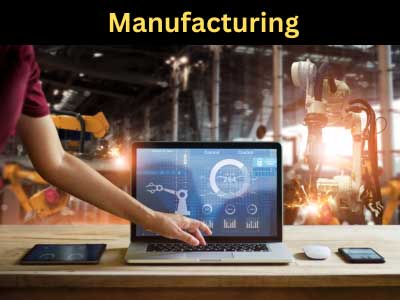Key Takeaway
Additive manufacturing, or 3D printing, offers several key benefits. It’s highly cost-efficient, reducing material waste by using only what’s necessary for each part. This method also allows for high customization, making it ideal for producing tailored products like medical implants.
Another benefit is rapid prototyping, which speeds up the design and testing process, leading to faster product development. Additive manufacturing’s ability to minimize waste by building parts layer by layer adds to its efficiency. This technology is used across industries like aerospace, automotive, and healthcare, proving its versatility and effectiveness.
Reduced Material Waste and Sustainability
Additive manufacturing stands out for its ability to minimize material waste. Unlike traditional subtractive methods like milling, where excess material is removed and discarded, additive manufacturing builds objects layer by layer, using only the material necessary. This results in little to no waste, making it a more sustainable option, especially when working with high-cost materials like titanium.
In the aerospace industry, for example, additive manufacturing produces lightweight components with complex geometries, such as fuel nozzles and aircraft brackets, that enhance performance while reducing material use. This reduction in waste not only lowers costs but also supports efforts toward more eco-friendly production practices.

Customization and Design Flexibility
Another key advantage of additive manufacturing is the unparalleled design flexibility it offers. Traditional manufacturing methods often require molds or dies, which can limit the ability to create custom or complex shapes. With additive manufacturing, there are virtually no design constraints, allowing engineers to create intricate geometries and internal structures that were once considered impossible.
This design freedom is particularly beneficial in industries like healthcare, where custom solutions are critical. For instance, 3D-printed prosthetics and implants can be tailored to fit an individual patient’s anatomy, offering a level of personalization that simply isn’t achievable with conventional manufacturing methods. The ability to produce one-off parts without the need for costly tooling makes additive manufacturing the go-to solution for customization.
In addition to healthcare, sectors like automotive and fashion are also taking advantage of this flexibility. Whether it’s creating customized car parts or producing limited-edition fashion items, additive manufacturing provides the tools needed to design and produce unique, individualized products on demand.
Faster Time to Market with Additive Manufacturing
Speed is another critical benefit of additive manufacturing. In traditional manufacturing, the process of creating molds, tooling, and setting up production lines can be time-consuming, particularly when dealing with small production runs or custom parts. Additive manufacturing eliminates these steps, allowing companies to produce parts directly from digital designs in a matter of hours or days.
For industries like consumer electronics or automotive, where rapid product development is essential, additive manufacturing offers a significant advantage. Engineers can quickly create prototypes, test them, and make modifications without waiting for external suppliers or complex manufacturing setups. This faster time to market enables companies to respond to customer demands and market changes more quickly.
Moreover, additive manufacturing allows for on-demand production, meaning companies don’t have to maintain large inventories of parts. Instead, they can print components as needed, reducing both lead times and storage costs. This agility gives businesses a competitive edge, especially in fast-paced industries where staying ahead of the competition is key.
Cost Savings in Small Batch Production
While traditional manufacturing excels in high-volume production, it can be cost-prohibitive for small batch production or custom parts due to the need for expensive molds and tooling. This is where additive manufacturing shines, offering significant cost savings for small production runs. Because there’s no need for tooling or complex setup, the cost per part remains low even in limited quantities.
For example, in the automotive industry, manufacturers often need to produce customized components or spare parts in small quantities. Additive manufacturing allows these parts to be produced quickly and affordably without the need for mass production infrastructure. The same principle applies to industries like jewelry or luxury goods, where limited edition or custom designs can be created at a fraction of the cost compared to traditional methods.
The cost-effectiveness of additive manufacturing is not only limited to low-volume production. By reducing material waste, lowering the need for complex assembly, and minimizing the steps involved in production, it’s also more cost-efficient for businesses aiming to optimize their production processes.
Enabling Innovation Through Rapid Prototyping
Perhaps one of the most important benefits of additive manufacturing is its role in enabling innovation through rapid prototyping. The ability to create physical prototypes directly from a digital design allows engineers and designers to test ideas quickly, iterate on them, and refine their products before moving into full-scale production.
This is particularly important in industries like electronics, consumer products, and automotive, where innovation is a driving force. With traditional manufacturing, each iteration of a prototype could take weeks to produce, delaying the development cycle. Additive manufacturing compresses this timeline, allowing for multiple iterations in a matter of days. This not only reduces time to market but also fosters a culture of experimentation and creativity.
For example, in product design, companies can use 3D printing to create multiple variations of a product, test them with focus groups, and refine the design based on feedback. This iterative process ensures that the final product is both functional and appealing, resulting in better overall performance and customer satisfaction.
Conclusion
The benefits of additive manufacturing are reshaping modern industry, from reduced material waste and design flexibility to faster production times and cost savings. By offering the ability to produce complex, customized products with minimal waste, additive manufacturing is not only driving sustainability but also enabling businesses to innovate faster and more efficiently.
For engineers entering this dynamic field, understanding these benefits is essential. Whether you’re working in healthcare, automotive, aerospace, or consumer goods, additive manufacturing provides the tools to transform ideas into reality with greater speed, precision, and flexibility. As technology continues to advance, the impact of additive manufacturing on industries will only grow, making it an indispensable part of modern production.
